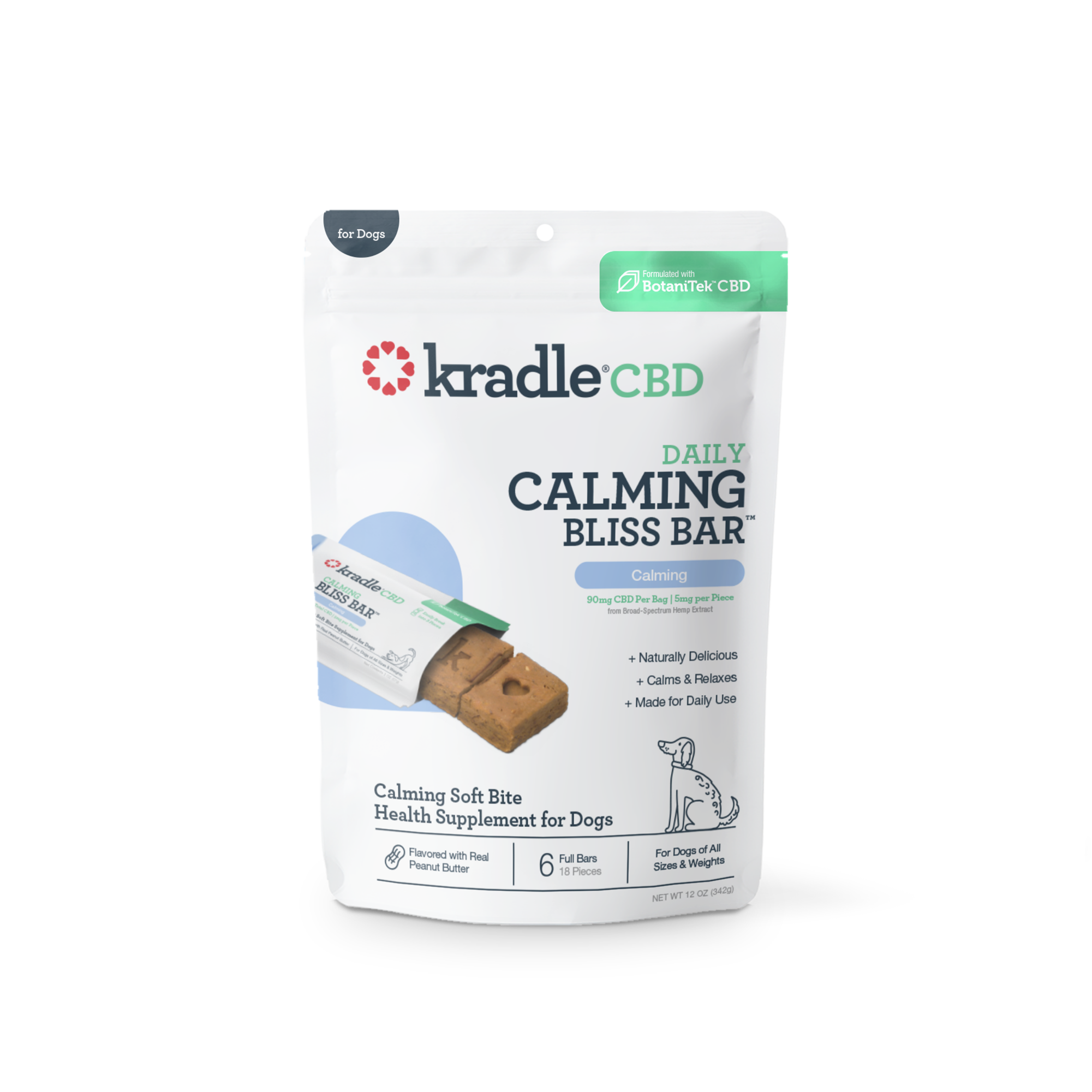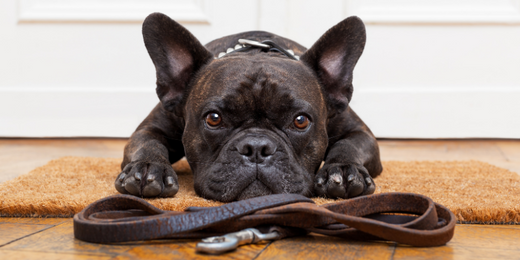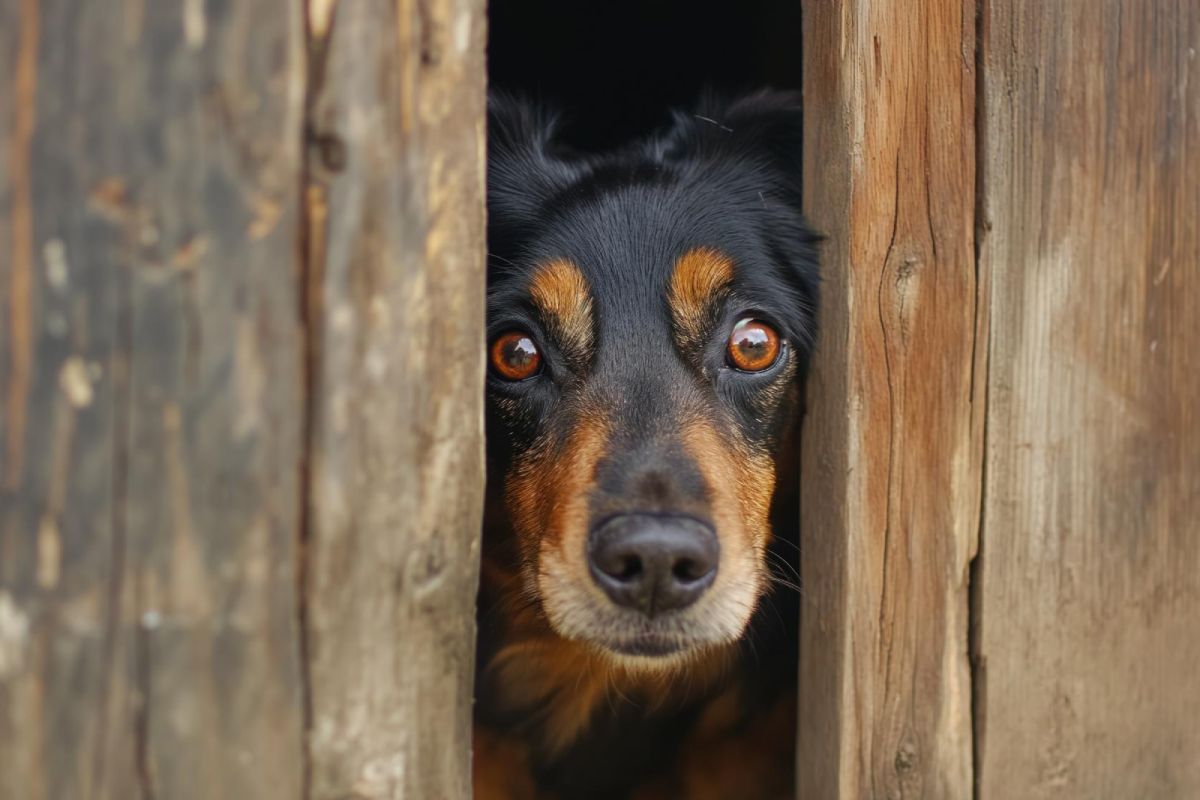
Why Is My Dog Panting and How to Calm Them Down
Have you ever woken up to your dog panting at night and stress out about how to calm a panting dog, especially if it is excessive and they are shaking? Well, you aren’t alone! It could be more than just a bad dream, especially during times like storm season.
Panting is a normal behavior for dogs, but it can also be a sign of stress. Many pet parents struggle with the question of when should I worry about my dog panting too much. Let’s start with understanding panting, and how to recognize if it is excessive, what causes it, and what to do to help sooth your furry friend.
Why Do Dogs Pant?
The primary reason dogs pant is to help regulate their body temperature. Unlike humans, dogs don’t sweat to control their body temperature — the only places they have sweat glands are on their nose and paws! They rely on panting to release heat and cool their bodies. As they breathe in cooler air and exhale warm, moist air, the evaporation of moisture from their tongue, nasal passages, and the lining of their lungs helps lower their body temperature.
Dogs may also pant after any type of exercise, whether walks, running around at the dog park, or even playtime, to catch their breath and get their breathing back to normal, just like you do after exercise. That’s not necessarily due to stress (though walks can be stressful at times), but rather the fact that they’re trying to cool themselves down.
Panting to control body temperature is a normal response by the dog’s body, but it may not be the only reason . Panting indoors at room temperature or panting at rest could mean there’s something else causing it, including stress. In fact, it’s one of the telltale signs of stress in dogs. To determine whether or not the panting is related to stress, consider the situation or environment your dog is in and if they’re displaying any additional signs of stress such as shaking, whining, repetitive yawning, and pacing. Excessive panting or shaking, especially at night, could also be related to one of the following:
1. Stress or Anxiety: Panting can be a sign of stress, fear, or nervousness, such as during car rides, thunderstorms, or visits to the vet.
2. Excitement: Dogs sometimes pant when they’re excited or stimulated, such as during play or when greeting a loved one.
3. Pain or Discomfort: Panting can be a subtle indication that a dog is in pain or feeling unwell. This is often accompanied by other signs like restlessness, whining, or reduced appetite.
4. Heat or Overheating: Dogs pant heavily in hot environments to prevent overheating. If their body temperature rises too high (hyperthermia), they may develop heatstroke, a potentially life-threatening condition.
5. Medical Conditions: Respiratory problems, heart disease or obesity could all be contributing to excessive panting and shaking.
6. Medication Side Effects: Some medications can cause panting as a side effect, particularly steroids.
7. Poisoning or Allergic Reaction: Toxic substances or severe allergic reactions may lead to panting, often accompanied by other signs like drooling, vomiting, or lethargy.
8. Aging: Older dogs may pant more frequently due to age-related conditions such as arthritis pain or cognitive decline.
When Is Panting Considered Normal?
Panting in dogs is considered normal when it is light to moderate and doesn’t seem forced, especially if it’s directly related to heat, exercise, or excitement. This is the dog’s body responding to heat and working to regulate body temperature. Panting is also normal if it subsides relatively quickly (a few minutes) once the cause is removed or the dog rests or if the dog appears otherwise comfortable (normal posture, relaxed body, no drooling or labored breathing).
Common Causes of Dog Panting at Night
If you find yourself asking why is my dog panting so much at night while doing nothing, there are several common potential causes.
-
Separation Anxiety or Stress: Dogs may pant if they feel anxious about being away from their owner at night. Or, they could have phobias of external stressors like loud noises from thunderstorms or fireworks. Changes in routine can also trigger nighttime anxiety.
-
Temperature Regulation: Dogs may pant at night if the sleeping environment is too warm or stuffy. Ensure the area is cool, provide fresh water, and consider using a fan or cooling mat.
-
Nightmares or Fear: During REM sleep, dogs may pant lightly, twitch, or move their paws while dreaming.
-
Age-Related Factors: Older dogs with Cognitive Dysfunction Syndrome (CDS) may pant at night due to confusion, disorientation, or anxiety.
What to Do When Your Dog is Shaking and Panting
Many people ask how to calm a panting dog, especially if they are also shaking. First, you want to assess the situation and look for any potential triggers. Next, you should take care of your furry friend and address any immediate needs by calming them down, providing a safe space, and making sure they are cool and hydrated. Then, evaluate potential causes such as:
-
Fear or Anxiety
-
Signs of Pain
-
Illness
Lastly, it is always advised to consult veterinary care especially if conditions are worsening. You may be able to put together a preventative plan for how to keep your dog from panting excessively or manage their stress and anxiety.
Can Storms Cause Panting at Night?
It’s a tale that’s all too familiar for pet parents each spring: you and your dog are sleeping soundly when all of the sudden it starts storming out of nowhere and it’s now impossible to get your dog to relax and go back to sleep.
Dogs panting at night when there's a storm could be a cause.Storms are incredibly stressful for many dogs and can certainly cause them to display signs of stress like panting. If it seems like storms are always louder at nighttime when all you and your dog want to do is sleep, that’s because they actually are. Storms that hit at night are more likely to produce hail, damaging winds, and flooding rain.
Sometimes storms in the middle of the night can be a bit unnerving for us when they cause branches to come crashing down or make the house shake. For your dog, it’s ten times worse. Loud noises are scary for dogs because they have no way of knowing what they are or when they will end.
To make matters worse, your house is probably quieter at nighttime than during the day, so your dog is that much more attuned to the rumbling noises outside. And, because dogs can hear sounds four times further away than humans, yours may start getting stressed out before you even hear the first clap of thunder.
How to Help Keep Your Dog from Panting at Night
Trying to calm your dog at night can be tricky when you’re tired but want to make sure your dog is okay before falling back asleep.
While it may be unrealistic to think that your dog will doze through the entirety of a loud storm (or anything else that’s making them stressed), there are ways for you to help with how to calm a panting dog and help them get a good night’s sleep. In addition to our five-step storm calming recipe, consider the following to help stop night panting in dogs:
-
Go for a longer walk a few hours before bedtime, so your dog will be more tired and likely to sleep through the night.
-
Make sure your dog is active throughout the day and has lots of playtime for the same reason!
-
Give your dog a massage to help them de-stress and fall back asleep. A dog’s ears, paws, and top of head are the main pressure points.
-
Play soothing music and white noise during stressful and loud situations like thunderstorms.
-
Incorporate "special" comfort items in your dog's bedtime routine, like a cozy blanket or toy.
-
Try calming products designed specifically for dogs. Kradle makes easy-to-use CBD chews and melts designed specifically for dogs and these anxious moments. CBD Calming dog chews can be extremely helpful for dogs who have ongoing stress or separation anxiety. For unexpected situations like thunderstorms, Kradle Quick Calm Melts provide a higher dosage of calming ingredients to help your furry friend manage their fears faster. Explore Kradle’s broad line of CBD chews, bones and melts designed to help dogs calm their panting at night (and during the day).
FAQs
-
Is it normal for puppies to pant at night?
-
Yes, it can be normal for puppies to pant at night in certain situations. However, excessive or persistent panting could signal an underlying issue that needs attention. It could be that where they are sleeping is too warm or they are having a little anxiety as they adjust to a new environment. It could also be they are just dreaming after an active day. Make sure your puppy isn’t overheating and that you aren’t overstimulating them before bed.
-
Can anxiety cause my dog to pant at night?
-
Yes, anxiety can cause your dog to pant at night. Panting is a common physical response to stress or nervousness. Anxiety activates your dog's fight-or-flight response, leading to elevated heart rate and breathing, which can manifest as panting. Other common signs that often accompany excessive panting are pacing, circling, whining, barking, trembling or exhibiting destructive behavior.
-
Does my dog's breed affect how much they pant?
-
A dog's breed can significantly affect how much they pant. Certain breeds are more prone to panting due to their physical characteristics, activity levels, or susceptibility to medical conditions. Flat-faced, high energy, large or giant breeds, double-coated, toy breeds or breeds prone to anxiety are more prone to panting.
-
Could my dog be panting because they're too hot at night?
-
Yes, your dog could be panting at night because they’re too hot. Panting is a natural way for dogs to regulate their body temperature, as they don’t sweat like humans (except minimally through their paw pads). If the environment is too warm, they may pant to cool down.
-
How you can help them stop panting at night if they are too hot is by adjusting the room temperature to a cooler temperature, provide a cool surface to sleep on, make sure they have enough water easily accessible, remove heavy blankets from where they sleep, and if they have a lot of hair make sure their coat is regularly groomed.
-
Should I be worried about my dog panting at night?
-
Dog panting at night if they are warm is normal. If your dog is shaking and panting, or if their panting is worsening, it is always a good idea to consult a vet. A dog that is panting so much while doing nothing or when they should be resting could be a sign of stress, or other underlying medical conditions.
-
Should I cuddle my dog during a thunderstorm?
-
If your dog wants to be close, you can absolutely cuddle with them and provide a soothing voice to help calm them down. But, some dogs may want space or want to hide in their safe space and may not want to be to be close even though you may want to be there for them.








